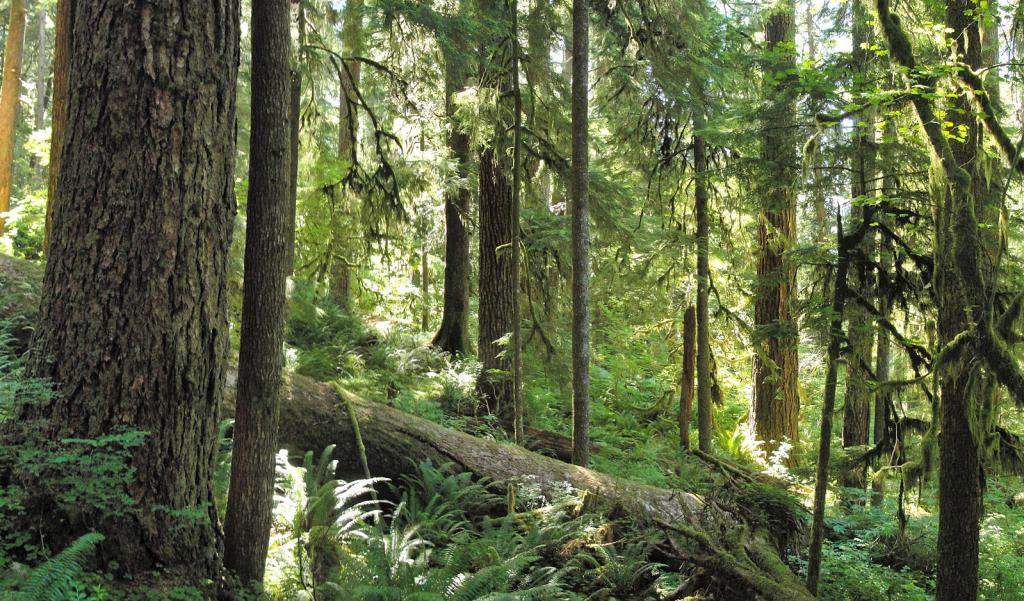
(Wikimedia Commons public domain image)
My concluding extracts from Richard Grant, “The Whispering of the Trees,” Smithsonian (March 2018):
Mother trees are the biggest, oldest trees in the forest with the most fungal connections. They’re not necessarily female, but [Professor Suzanne] Simard sees them in a nurturing, supportive, maternal role. With their deep roots, they draw up water and make it available to shallow-rooted seedlings. They help neighboring trees by sending them nutrients, and when the neighbors are struggling, mother trees detect their distress signals and increase the flow of nutrients accordingly.
In the forest ecology laboratory on campus [at the University of British Columbia], graduate student Amanda Asay is studying kin recognition in Douglas firs. (Ecologist Brian Pickles at England’s University of Reading was the lead author and collaborator with Asay and others on the project.) Using seedlings, Asay and fellow researchers have shown that related pairs of trees recognize the root tips of their kin, among the root tips of unrelated seedlings, and seem to favor them with carbon sent through the mycorrhizal networks. “We don’t know how they do it,” says Simard. “Maybe by scent, but where are the scent receptors in tree roots? We have no idea.” . . .
Scientists are only just beginning to learn the language of trees, in [UBC graduate student Allen] Larocque’s view. “We don’t know what they’re saying with pheromones most of the time. We don’t know how they communicate within their own bodies. They don’t have nervous systems, but they can still feel what’s going on, and experience something analogous to pain. When a tree is cut, it sends electrical signals like wounded human tissue.”
Over a sandwich lunch on campus, with Larocque listening carefully, Simard explains her frustrations with Western science. “We don’t ask good questions about the interconnectedness of the forest, because we’re all trained as reductionists. We pick it apart and study one process at a time, even though we know these processes don’t happen in isolation.” (54)
I don’t know what to make of all this. Will these theories and their supporting data withstand further scrutiny? I have no idea. But it’s all quite intriguing.
And, if it’s true that there’s a kind of intelligence to forests, if not indeed to individual trees, that would seem to me (along with considerable other evidence) strongly to suggest that “mind” — in some form or another — is far more pervasive in nature than materialist, physicalist, and/or reductionist thinkers wish to acknowledge.












